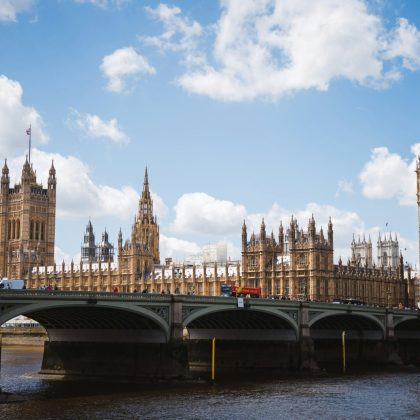Shortly after the Treasury released the budget Red Book, Account Director Alexander Peel wrote about which policies are most relevant for the built environment in a blog post on the Coverdale Barclay website. Some of these will affect businesses of all stripes, not just those in our sector.
These include the £3.4 billion of funding for the government’s Warm Homes Plan to decarbonise residential stock, which will affect the world of real estate in a much more specific way – and was welcomed by producers and installers of the sorts of green technology that will be needed to deliver on these ambitions.
Now that the dust has settled and the flurry of opinion has (mostly) quietened down, how will some of these policies affect the built environment in the medium term, and what is the wider outlook for the sector?
A shifting outlook for interest rates
On the face of it, an inflation rate of 1.7% coming in under the Bank of England’s target of 2% should be cause for celebration among those who have lower interest rates on their Christmas wish list.
However, the UK is experiencing some unique macroeconomic dynamics that may give rate-setters reason to slow their campaign of cutting compared to the European Central Bank or the US Federal Reserve.
Stagnant productivity and a fall in labour market participation compared to before the pandemic mean that the Budget policies that have increased pressure on employers – namely a higher minimum wage and National Insurance costs – will more than likely be passed on to consumers. This would mean the reprieve the country has had from high inflation is going to be short lived, and rates will be higher for longer as a result.
Viability continues to be a challenge.
While a £500 million investment into the government’s Affordable Homes Programme sounds significant, this is earmarked to deliver 5,000 new homes. That’s less than half a percent of the government’s total housebuilding ambitions over the course of the current Parliament.
The core reasons that viability is strained for housebuilders at the moment – affordable housing requirements combined with high material costs, disrupted supply chains, a tight labour market in construction, and what many would argue are onerous planning requirements relating to biodiversity – are not going away any time soon.
Indeed, even housing associations themselves are citing challenging economic conditions as the reason they are unable to buy the homes being produced for the sector.
There are a few levers that the government could pull, outside of direct financial support – a softening of the 50% affordable housing requirement for grey belt sites or a relaxing of some of the more expensive planning rules. The recent furore over the £100 million HS2 bat tunnel may guide thinking here.
However, given the many thousands of responses to the National Planning Policy Framework consultation, the industry may be waiting until early 2025 for the draft text. All eyes will be on this to see if viability improves.
The start of a new cycle?
It’s not all doom and gloom, however. Many businesses and commentators are heralding 2025 as the beginning of a new cycle in property – the point at which valuations have bottomed out, the market becomes more stable, and the outlook tends toward growth. These cycles have historically lasted between 7-10 years in the UK.
While the picture is not the same across all sectors, many of the disruptions caused by the pandemic have eased or disappeared entirely. And while interest rates may not fall as quickly has some had counted on, the long-term outlook that the cost of finance will come down. There is also an argument to be made that international investor confidence is being revived in the UK, which could see new sources of funding for development.
Overall, then, the mood is still one of cautious optimism. As the market picks back up but some uncertainty remains, the need for businesses to be strategic with their investments as well as their communications has never been stronger.



